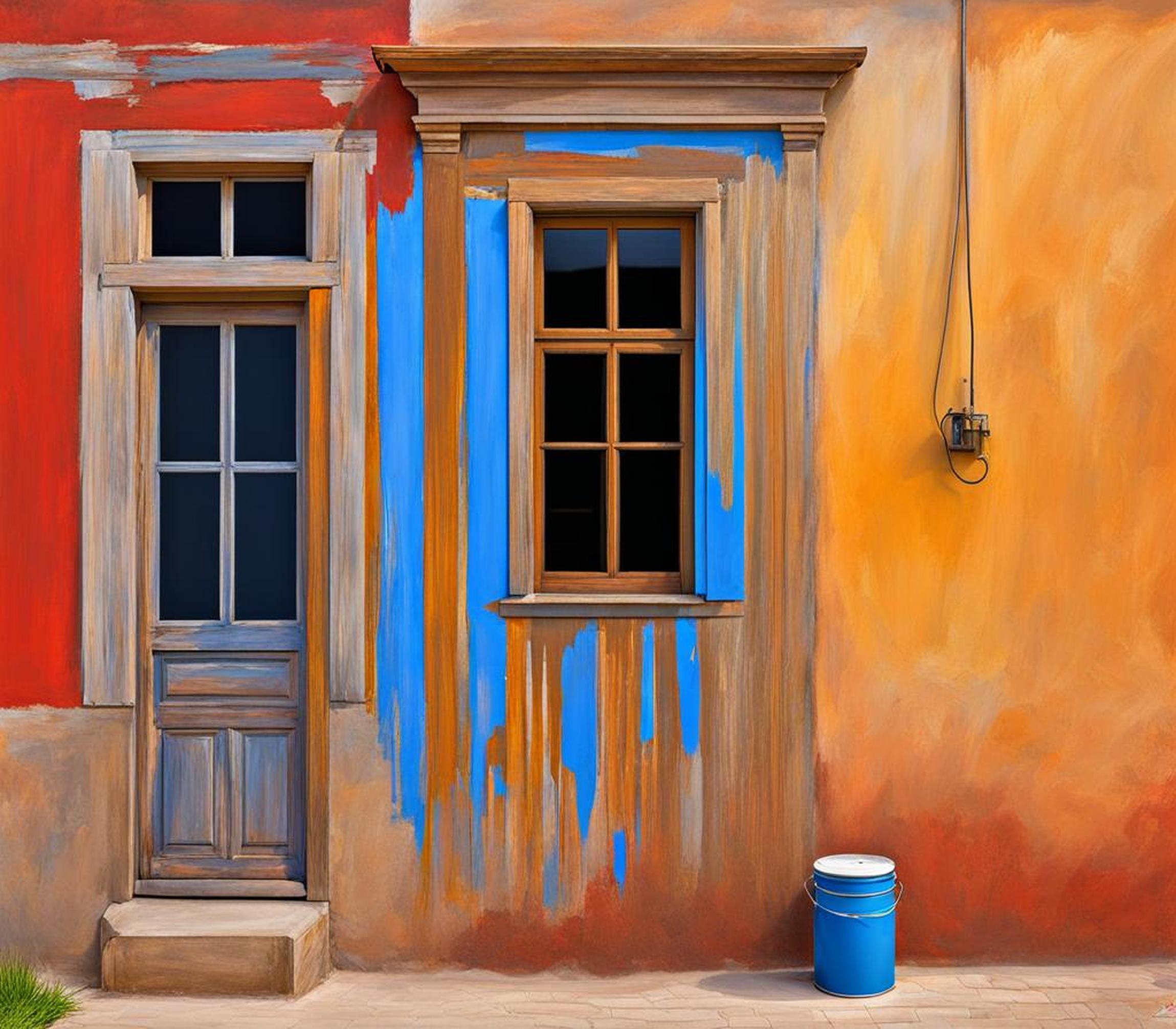If you’ve ever painted the exterior of a home or building, you know the frustration of waiting…and waiting…for the paint to finally dry. Unlike interior paint that dries within an hour or two, exterior paint can take many hours or even days to dry and cure completely.
This leaves you stuck in limbo, unable to apply another coat or expose the surface to rain or sun too soon. And if you do, problems like cracking, blistering, and peeling can quickly ruin all your hard painting work and leave you starting from scratch.

Why Exterior Paint Dry Times Are Such an Issue
When compared to painting indoor walls, dealing with exterior paint dry times can be downright maddening.
First, you put in all the sweat and effort of properly cleaning and preparing the exterior surface. Then you carefully apply the primer and paint coats. But your work isn’t done yet – now you must wait for the paint to dry and cure.
During this waiting period, any number of disasters can strike – from rain or wind to falling tree branches. If the paint hasn’t formed a fully hard film, damage is inevitable. This means wasted paint and precious time as you attempt repairs and re-paint the area.
Factors that Slow Dry & Cure Times
Under good conditions, exterior latex paint should dry within an hour or two with oil-based paint taking up to 8 hours to dry. But the environmental factors your outdoor surfaces face can dramatically slow the process.
Cold temperatures, high humidity, stagnant air, and applying paint too thickly are the biggest culprits for lengthening exterior paint dry times. But what exactly causes the delay?
A Deep Dive Into All the Elements That Impact Dry Times
Temperature
The drying process relies on the solvents and binders in paint evaporating into the air. Heat speeds up evaporation while cold temps make it grind to a halt.
The ideal temperature range for latex paint is between 50-90degF. Oil-based paint prefers the 55-90degF range. If outdoor temps dip below 50degF, expect dry times to be considerably longer.
Humidity
Moisture interferes with proper paint film formation, especially for latex paints. At high humidity levels over 85%, water gets trapped under and within the paint film.
This slows drying and curing drastically. For fastest drying, aim to paint when humidity levels are less than 85% and temperature is on the warmer side.
Wind and Air Circulation
While humidity hinders drying, air movement accelerates water evaporation so paint forms a dry film faster. Stagnant air surrounded by walls or overhangs means no breeze to whisk away moisture.
When possible, paint on days with gentle wind rather than completely still air. And avoid tight enclosed areas with no ventilation or airflow.
Key Differences Between Water and Oil-Based Exterior Paints
Latex Paint Properties
Latex paint utilizes water as its solvent along with acrylic or vinyl polymers as binders. Benefits like water cleanup and low odor make latex a popular choice.
Latex paint dries to touch rapidly thanks to fast water evaporation. But it takes latex over 2 weeks to fully cure and achieve its hardened film. Curing continues for up to 30 days.
Oil-Based Paint Properties
Instead of water, oil-based paints use natural oils or alkyd resins as solvents. Known for durability and rich glossy finish, oil paints take longer to dry as thicker oils evaporate slower.
But oil paints cure faster than latex once dry thanks to their simpler oil composition. Curing completes in 3-7 days unless temps are dramatically cold.
Painting Best Practices For Faster Drying and Curing
Prep Work Is Crucial
Proper surface prep removes grime and flaking paint so the new paint can adhere properly. Address any moisture issues which drastically slow drying. Priming seals surfaces for better paint adhesion.
Pick The Right Weather Conditions
Ideally paint when outdoor temperatures are between 50-90degF with low humidity and some wind. Avoid very humid days over 85% moisture if possible.
Apply Paint Properly
Follow manufacturer’s guidelines for wet film thickness by not applying too thickly. Use high quality brushes and rollers to ensure even coverage without dripping.
How Long Should You Actually Wait Before Recoating or Exposing Paint
Latex Paint Dry Times
Before recoating latex paint, allow 1-3 hours of dry time based on weather. Curing takes 14-30 days before exposing to intense sun, rain, and dramatic temp swings.
Oil-Based Paint Dry Times
Wait at least 6-8 hours between oil paint coats. Curing completes in 3-7 days normally. Test paint hardness before exposing surface to weathering.
Planning Your Exterior Painting Project With Dry Times in Mind
Adjust Schedule for Extended Curing If Needed
Even fast drying paints still require days or weeks to cure fully. Plan painting timelines for colder weather accordingly. Build extra time cushions into the schedule.
Pick The Right Paint Finish and Sheen
Higher gloss paints take longer to dry and cure than flat or matte finishes. Satin or semi-gloss are good compromises between aesthetics and dry time.
Dealing with exterior paint dry times can try one’s patience thanks to weather, humidity, and other factors out of your control. But armed with the right information on paint types along with temperature, humidity, and application best practices, you can minimize delays.
Plan painting timelines appropriately and test surface dryness before exposing delicate fresh paint to the elements. Follow manufacturer guidance and check weather forecasts to pick ideal painting conditions. With smart planning and preparation, you can achieve a beautiful and durable exterior paint job.
